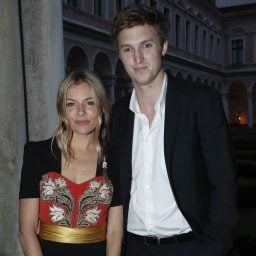Every Monday morning, artnet News brings you The Gray Market. The column decodes important stories from the previous week—and offers unparalleled insight into the inner workings of the art industry in the process.
This week, drilling into pop culture in search of something deeper…
BOYS TO MEN
On Friday, Vanity Fair posted a story from its latest print issue tracing the rise of the so-called Art Boy among the Hollywood set. On one hand, it’s a mildly entertaining/slightly eye-rolly look at a growing trend in celebrity romance. On another, it’s a surprisingly revealing emblem of what the art market has become in 2019.
Writer Rachel Dodes sets out to accomplish two goals in the piece. First, she rounds up the most prominent examples of (straight) actresses and models who have minted relationships with (straight) guys occupying various roles in contemporary art. She leads with Jennifer Lawrence’s surprise engagement to Gladstone director Cooke Maroney last fall, then pivots into the recent romance between Sienna Miller and David Zwirner Books editorial director (and mega-dealing scion) Lucas Zwirner, Amber Heard’s involvement with gallerist Vito Schnabel, and a few other earlier examples. (I’m consciously omitting her examples of actual artists as love interests because I think that, unlike dealers, their appeal has been evergreen.)
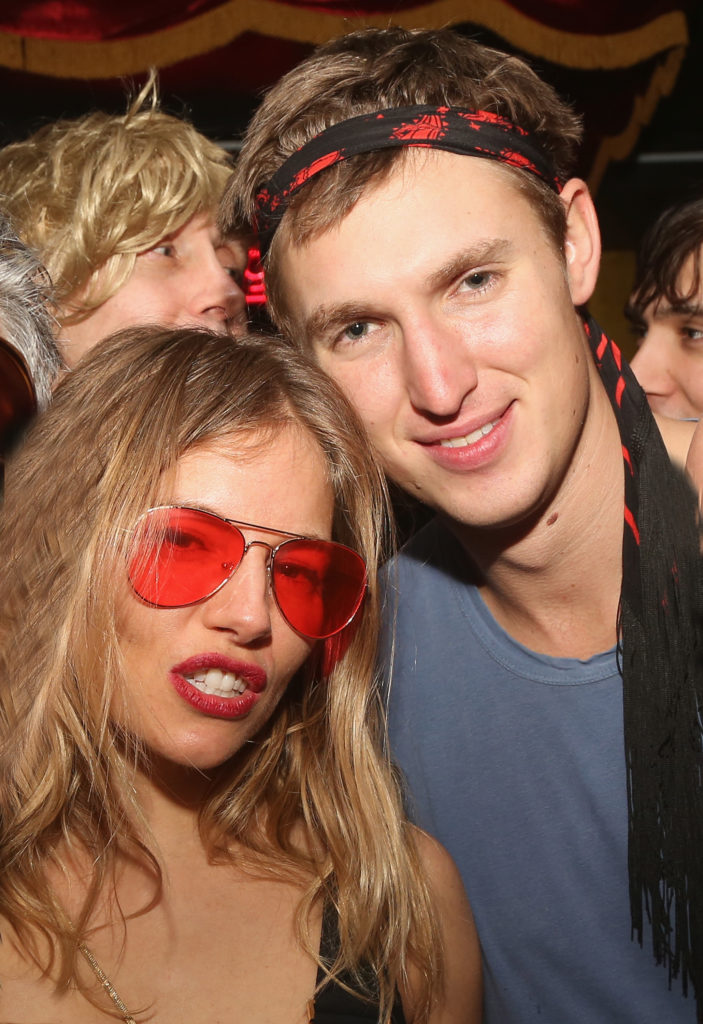
Sienna Miller with Lucas Zwirner at actor Alan Cumming’s Studio-54-themed birthday party in 2019. (Photo by Bruce Glikas/Bruce Glikas/WireImage)
Dodes’s second goal is to investigate the root cause of the Art Boy’s resonance in today’s cultural climate, whether it manifests in real-life relationships or characters in recent movies and TV series. (Conspicuously unmentioned in her examples: Jake Gyllenhaal as bisexual art critic Morf Vandewalt in Netflix’s art-world horror satire, Velvet Buzzsaw.) And it’s in this latter move that Dodes lands on something genuinely meaningful about the art business.
The best encapsulation comes in her assertion that “the Art Boy’s most alluring attribute may be that he possesses two elements that are rarely paired together in modern life: time and money.” She goes on to describe paparazzi shots of the various Celeb Girl-Art Boy couples living lives of leisure in romantic locales like Paris and Rome, as well as lux restaurants, bars, and hotels in art hubs like New York and LA.
There’s truth to this idea, but it flies slightly wide of the bullseye. To me, the issue isn’t so much that Maroney, Schnabel, and Zwirner can jet off to glamorous European destinations or splurge on dinners at Nobu because their jobs aren’t that time-consuming. It’s more that the job of “contemporary art dealer” now regularly requires them to be in these types of places and do these types of things.
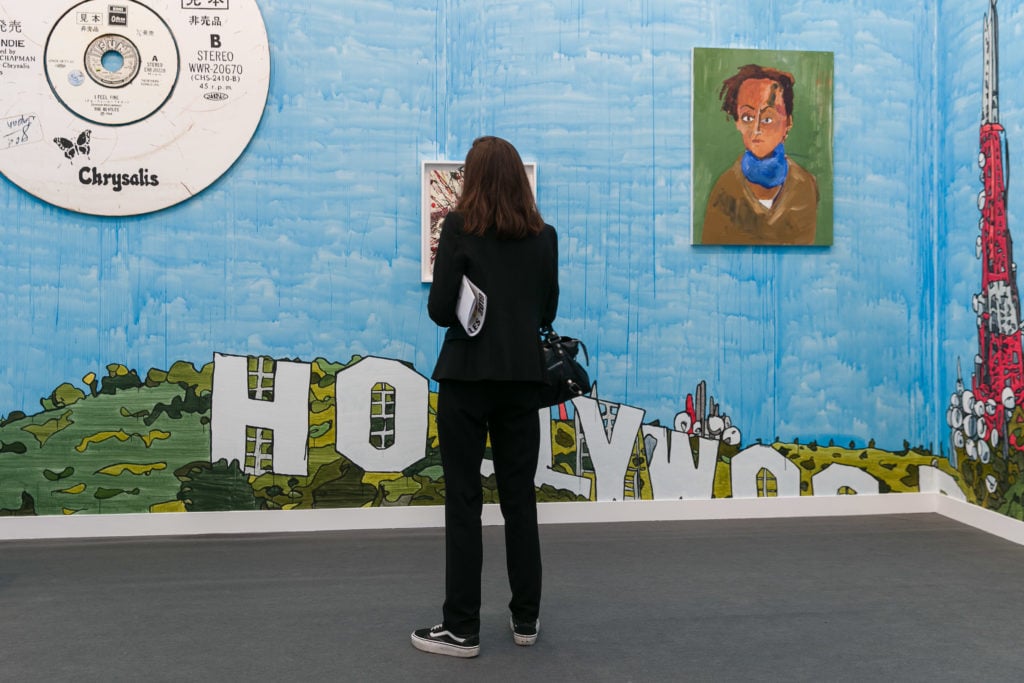
A visitor to Blum & Poe’s booth at the inaugural Frieze Los Angeles in 2019. Photo by Mark Blower. Courtesy of Mark Blower/Frieze.
FLY AWAY HOME
Here are two indisputable realities about selling work in the high-end art market: It slingshots you on a year-round world tour of glamorous destinations for specific industry events, and it demands you spend a lot of time and money proving to very rich people that you belong with them. (Side note: Although Lucas Zwirner is not technically a dealer, his various editorial projects still contribute major soft power to the mega-gallery’s sales efforts.)
This is why I always say that opening a gallery is the 2019 version of opening a restaurant or nightclub. The aura, the optics, the events all lay down a blanket of cool able to temporarily mask that you’re most often just shoveling piles of money into a blast furnace like you’re trying to power a steamship. It’s possible that no business out there looks better while being worse—unless, that is, you’re part of the uppermost echelon, like the Art Boys that Dodes references.
The newfound importance of travel—specifically, travel to sophisticated, metropolitan cities around the globe—only bolsters the appeal of the Art Boy archetype and the art-industry lifestyle. As a reminder, the trade went from holding 68 art fairs around the world in 2005 to 189 fairs in 2011, according to Georgina Adam, with the grand total generally estimated at between 200 and 300 today. And that doesn’t count any of the other art-world events that keep industry players nomadic: galas, major museum exhibitions, biennials and triennials, etc. It never stops.
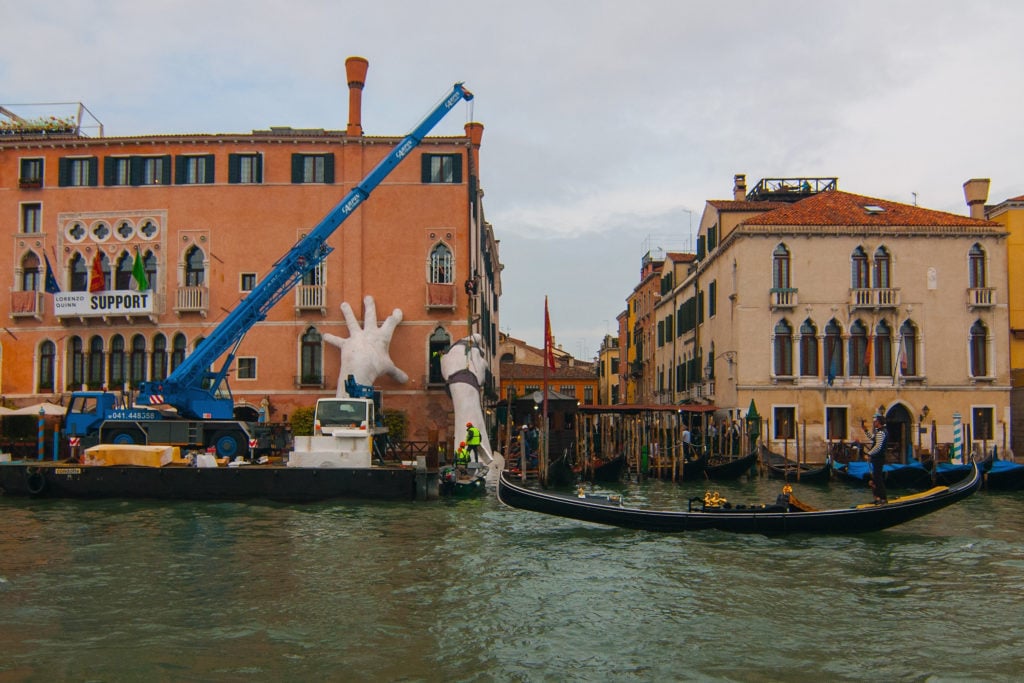
‘SUPPORT’ by Lorenzo Quinn, during the 57th Venice Biennale in 2017. (Photo by Awakening/Getty Images)
While Dodes rightly points out the relatively recent explosion in the art market, it’s also crucial to note the umbilical cord connecting elites of all types and travel. In her 2012 book Plutocrats: The Rise of the New Global Super Rich and the Fall of Everyone Else, Chrystia Freeland recounts Google’s then-CEO Eric Schmidt describing the global circuit of events that the very wealthy feel compelled and/or obligated to attend as a way of continuously polishing their bona fides:
So let me tell you what the list is. There’s [the World Economic Forum in] Davos. There’s the Oscars. There’s the Cannes Film Festival. There’s Sun Valley. There’s the TED conference. There’s Teddy Forstmann’s conference. There’s UN Week, Fashion Week. In London, there is Wimbledon Week….
These have become global events, when they were local events…. They’re not nearly as much fun as they were when I was reading about them in the paper. But because I see myself as a global citizen, I go anyway…. There’s a perception you have to be there.
Now compare that take by Schmidt (who, it should be mentioned, wasn’t exactly abstaining from the pleasure dome on his journeys) to this excerpt from an interview with Art Basel global director Marc Spiegler on Art Market Monitor’s podcast in 2016:
It’s telling that the major amfAR [American Foundation for AIDS Research] gala in Asia is taking place during or right before Art Basel in Hong Kong every year, bringing together those people from all over…. I went to a gala last year where the crowd was 90 percent mainland Chinese and the highest level of socioeconomic elite. I don’t think more than 20 percent of them were actual collectors, but they were there because that was the place to be. At any given moment on any given day there is a place to be, whether it’s Davos, or Cannes, or Montreuil, or Coachella, or whatever—St. Barth’s right before Christmas. [Art Basel Hong Kong] is the place to be in Asia at that moment.
In this way, the art world has hybridized with the nomadic modus operandi of its elite, globalized clientele. To succeed, you have to keep moving to the right spots on the map at the same time as the buyers. And when you get there, you have to keep flexing at the same level of opulence as they are, even when you’re not exhibiting work. You have to show you belong.
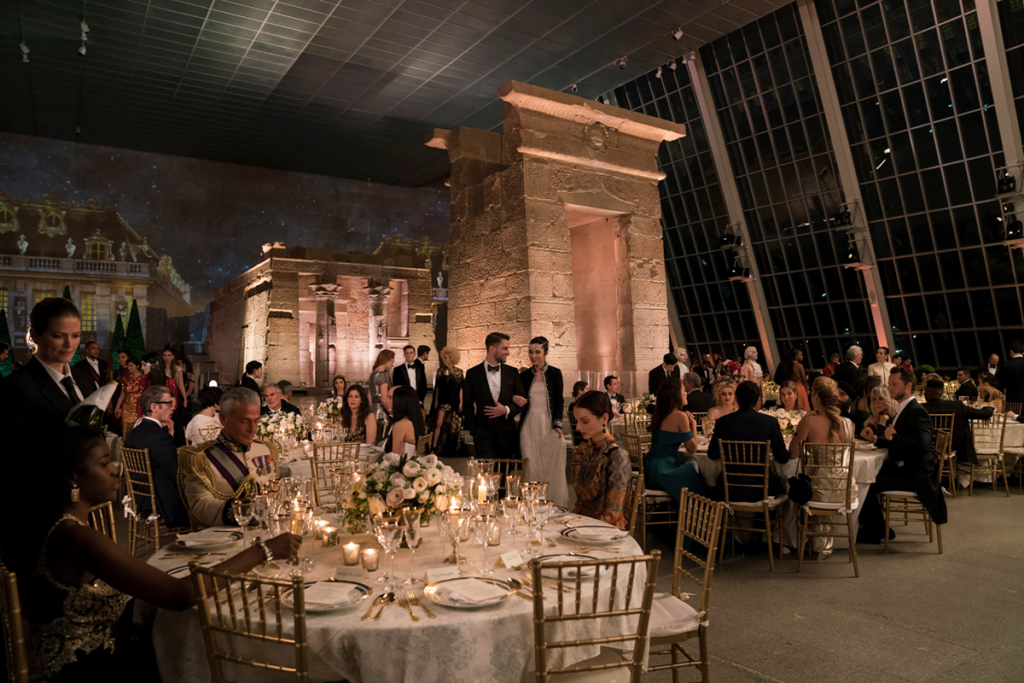
The Met Gala in Ocean’s 8. Photo courtesy of Barry Wetcher, ©2018 Warner Bros. Entertainment Inc.
SAME DIFFERENCE
Look, I can’t speak to the other qualities that might make Dodes’s Art Boys appealing to their celebrity paramours. But I know that “high-end contemporary art dealer” now signifies a lifestyle that asks A-list models and actors to sacrifice nothing in the way of luxury and jet-setting if they don’t want to.
To me, the point isn’t that Art Boys are so different from Hollywood’s past categories of love interest. It’s that they’ve become so much the same: completely at home among the wealthy and famous, acutely attuned to the finer things in life, perpetually traveling a lavish global itinerary to prove their credentials to their buyers. The high-end art market is not a space of difference from plutocrats. It is a space of deference to them.
And as ridiculous as you may think it is that the art media is paying attention to Vanity Fair, looking away from it means looking away from how far the art business has already moved in one very important direction. And that’s not helping anyone who needs it.
[Vanity Fair]
That’s all for this week. ‘Til next time, remember: No matter where in the world you may be, privilege tends to look very much the same.







